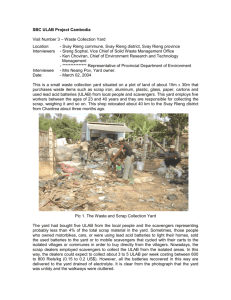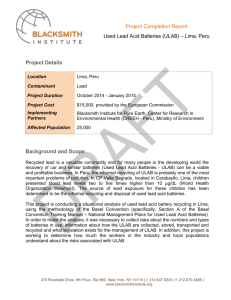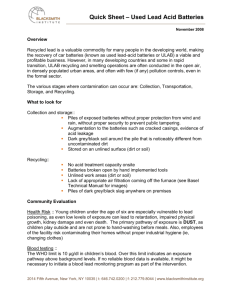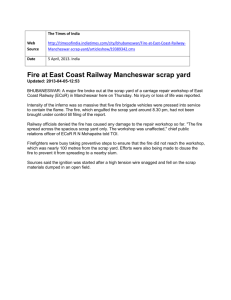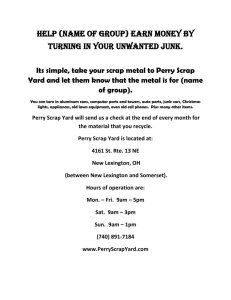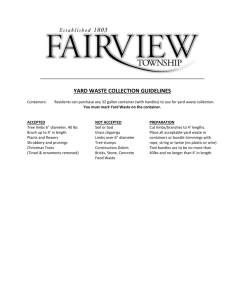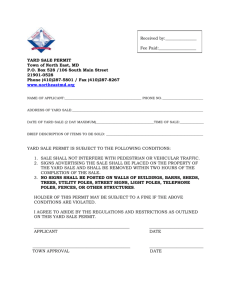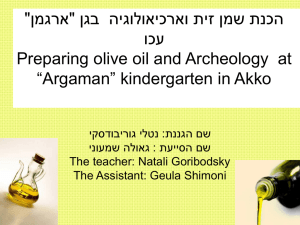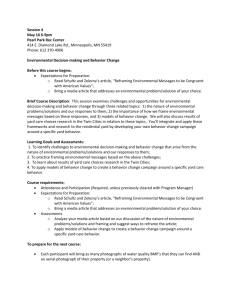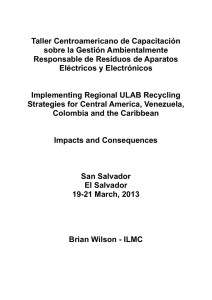Amended The Waste Materials Yard showing the changes
advertisement
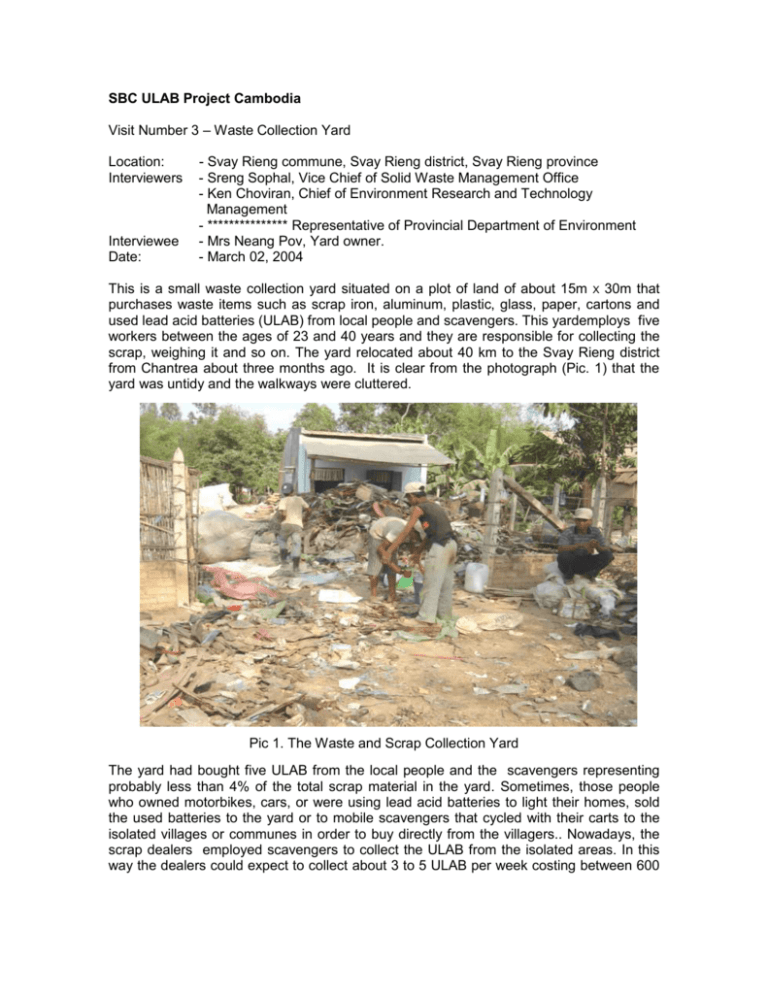
SBC ULAB Project Cambodia Visit Number 3 – Waste Collection Yard Location: Interviewers Interviewee Date: - Svay Rieng commune, Svay Rieng district, Svay Rieng province - Sreng Sophal, Vice Chief of Solid Waste Management Office - Ken Choviran, Chief of Environment Research and Technology Management - *************** Representative of Provincial Department of Environment - Mrs Neang Pov, Yard owner. - March 02, 2004 This is a small waste collection yard situated on a plot of land of about 15m X 30m that purchases waste items such as scrap iron, aluminum, plastic, glass, paper, cartons and used lead acid batteries (ULAB) from local people and scavengers. This yardemploys five workers between the ages of 23 and 40 years and they are responsible for collecting the scrap, weighing it and so on. The yard relocated about 40 km to the Svay Rieng district from Chantrea about three months ago. It is clear from the photograph (Pic. 1) that the yard was untidy and the walkways were cluttered. Pic 1. The Waste and Scrap Collection Yard The yard had bought five ULAB from the local people and the scavengers representing probably less than 4% of the total scrap material in the yard. Sometimes, those people who owned motorbikes, cars, or were using lead acid batteries to light their homes, sold the used batteries to the yard or to mobile scavengers that cycled with their carts to the isolated villages or communes in order to buy directly from the villagers.. Nowadays, the scrap dealers employed scavengers to collect the ULAB from the isolated areas. In this way the dealers could expect to collect about 3 to 5 ULAB per week costing between 600 to 800 Riels/kg (0.15 to 0.2 US$). However, all the batteries recovered in this way are delivered to the yard drained of electrolyte. Pic. 2 Workers sorting the ULAB from the rest of the scrap materials The Yard was not involved in breaking the ULAB to recovery the plates or recycle the lead.. The ULAB obtained from scavengers are sold to ethnic Vietnamese or Cambodian traders and transported, in lots of between 500 to 1000 kg, to Vietnam for recycling every three or four months. Sometimes the Vietnamese traders brought goods into Cambodia to sell and returned with ULAB to Vietnam. There was definitely nobattery breaking or recycling in Svay Rieng province because it is so close to the border with Vietnam it is not worth trying to recycle the ULAB in competition with the Vietnamese. Pic. 3 Scavengers selling scrap items at the Yard Pic. 4 - ULAB mixed with other items in the Yard None of the workers were wearing gloves, goggles or masks while they were working. Indeed, despite the fact that they all handled the batteries and discharged the acid into either the soil pit or the low land in front of the yard, no protective equipment was visible anywhere on the premises. Moreover, the workers slept in a hammock suspended either next to or above the ULAB or they chose to eat close to them. Pic. 5 – A person asleep in the hammock suspended above the ULAB Pic. 6 - The ULAB were close to the normal place to eat During the course of the visit, the shop owners were helpful and allowed access to the premises and gave permission to take photographs. They only knew about the adverse health effects of the battery acid, but knew nothing about the serious population and the environmental threats posed by lead exposure.. March 2, 2004
